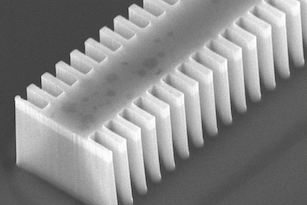Woking with industry
The Centre has active engagements with over 50 industrial partners who collaborate with our researchers under a range of funding streams and mechanisms spanning from industrially-led studentships, Innovate UK funded programmes, technology development strands under all four of the UK National Quantum Technology Hubs, contract research, consultancy and access to our state-of-the-art facilities.
The Centre is a key supplier of skilled personnel into industry who often recruit researchers and technologists through collaboration with our academic groups.
Find out more about how to engage with the Centre
Mechanisms
Collaborative Research
We have a strong track record of collaborating with industry and other research institutions. By collaborating with us your company can benefit from our extensive and ongoing input to the research process at all stages, and the University's world-class research expertise and facilities. Jointly we can seek external research funding from organisations such as Innovate UK, government departments and UK Research and Innovation.
Industry-led Studentships
Industry-led studentships can provide an economic way to solve a company's research, design, or manufacturing problems. The scheme allows industry to forge closer links with universities and to draw upon their expertise and facilities. Research students working on projects which are jointly devised and supervised by academic departments and cooperating bodies; these projects are between one and three years in duration.
Contract Research and Consultancy
We are experienced in tailoring our service to meet the specific needs of individual organisations. Our wide range of experience includes working with international blue chip companies from many sectors. Our expertise covers a wide range of disciplines allowing us to offer you unique, inter-disciplinary solutions to satisfy your requirements. Our research experts can be relied upon to provide consultancy services.
Case Studies
Next generation photon avalanche diode (SPAD) detectors
Single-photon detection allows measurement of rapid changes in optical signal with picosecond timing accuracy. Such measurements are vital for automotive sensing using laser pulses to create a 3D image of the vehicle’s surroundings. Ideally these lasers should operate in the short-wave infrared, which is eye-safe, but traditional detectors at these wavelengths are poor. To solve this problem, we're developing the next generation of inexpensive single-photon avalanche diode (SPAD) detectors using planar germanium-on-silicon. We have achieved a step-change in performance, demonstrating single-photon detection efficiency of 38% at 125 K at a wavelength of 1310 nm, and a fifty-fold reduction in noise compared with previous optimised mesa geometry SPADs. This patent-pending technology offers a route towards large arrays of efficient, high data rate detectors for use in eye-safe automotive and other sensing applications.
GasSight Methane Camera
Working with M Squared Lasers Ltd., Dr Graham Gibson, Kyle Nutt and Prof Miles Padgett have developed GasSight, a low-cost imager that can produce real time video of methane gas emissions. With funding from QuantIC, Innovate UK and M Squared Lasers, GasSight uses a telecoms laser diode to illuminate a scene at 1.65 μm, exactly the wavelength of light that methane gas absorbs and a short-wave infrared camera to measure the variation in back-scattered light. This work builds upon Glasgow’s expertise in gas spectroscopy, single-pixel imaging techniques and image processing. Each unit of methane released into the atmosphere has global warming potential three times that of carbon dioxide. A major motivation for our camera is therefore to detect methane leaks in industrial plants, gas pipelines and municipal waste facilities as the control of such emissions is essential in reducing carbon emissions towards net zero.

Accelerating commercialisation of superconducting devices for quantum applications
Wed, 11 Aug 2021 14:22:00 BST



Developing the UK Quantum Technology Supply Chain for Cold Atoms
Thu, 12 Aug 2021 09:33:00 BST









